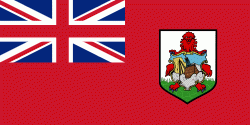Warwick Parish (Warwick Parish)
Warwick Parish is one of the nine parishes of Bermuda. It is named after Robert Rich, 2nd Earl of Warwick (1587-1658).
It is located in the central south of the island chain, occupying part of the main island to the southeast of the Great Sound, the large expanse of water which dominates the geography of western Bermuda, and also a number of islands which lie within that sound. It is joined to Southampton Parish in the southwest, and to Paget Parish in the northeast. As with most of Bermuda's parishes, it covers just over 2.3 square miles (about 6.0 km² or 1500 acres). It had a population of 9,002 in 2016.
Natural features in Warwick include Warwick Long Bay, Riddell's Bay, Darrell's Island, Hawkins Island, Long Island, and Marshall's Island. Hinson's Island, once part of Warwick, is now part of Paget Parish.
The parish also contains Warwick Camp, the former rifle ranges of the Imperial military garrison, which is, today, the home of the Bermuda Regiment, and most of which doubles as parkland (and the territory of which includes Warwick Long Bay, Horseshoe Bay, and the smaller beaches between).
Christ Church on Middle Road, Warwick is one of the world's oldest Presbyterian churches outside of Europe. It was founded in 1719 and is part of the Church of Scotland.
Warwick Pond was designated a Ramsar site on May 11, 1999.
PHC Zebras football club returned to PHC Field in 2015 after 17 years. It was named Warwick Stadium when it hosted its first match in the Bermuda Football Union.
It is located in the central south of the island chain, occupying part of the main island to the southeast of the Great Sound, the large expanse of water which dominates the geography of western Bermuda, and also a number of islands which lie within that sound. It is joined to Southampton Parish in the southwest, and to Paget Parish in the northeast. As with most of Bermuda's parishes, it covers just over 2.3 square miles (about 6.0 km² or 1500 acres). It had a population of 9,002 in 2016.
Natural features in Warwick include Warwick Long Bay, Riddell's Bay, Darrell's Island, Hawkins Island, Long Island, and Marshall's Island. Hinson's Island, once part of Warwick, is now part of Paget Parish.
The parish also contains Warwick Camp, the former rifle ranges of the Imperial military garrison, which is, today, the home of the Bermuda Regiment, and most of which doubles as parkland (and the territory of which includes Warwick Long Bay, Horseshoe Bay, and the smaller beaches between).
Christ Church on Middle Road, Warwick is one of the world's oldest Presbyterian churches outside of Europe. It was founded in 1719 and is part of the Church of Scotland.
Warwick Pond was designated a Ramsar site on May 11, 1999.
PHC Zebras football club returned to PHC Field in 2015 after 17 years. It was named Warwick Stadium when it hosted its first match in the Bermuda Football Union.
Map - Warwick Parish (Warwick Parish)
Map
Country - Bermuda
 |
 |
Bermuda is named after Spanish explorer Juan de Bermúdez, who discovered the archipelago in 1505. The islands have been permanently inhabited since 1612, and, forming part of British America, became a crown colony in 1684. The first African slaves arrived in 1616, but as the slave trade ceased by the end of the 17th century, the colony developed into a base for merchants, privateers, and the Royal Navy. More recently, tourism has been a significant contributor to Bermuda's economy. After World War II the territory became an offshore financial centre and tax haven.
Currency / Language
| ISO | Currency | Symbol | Significant figures |
|---|---|---|---|
| BMD | Bermudian dollar | $ | 2 |
| USD | United States dollar | $ | 2 |
| ISO | Language |
|---|---|
| EN | English language |
| PT | Portuguese language |















